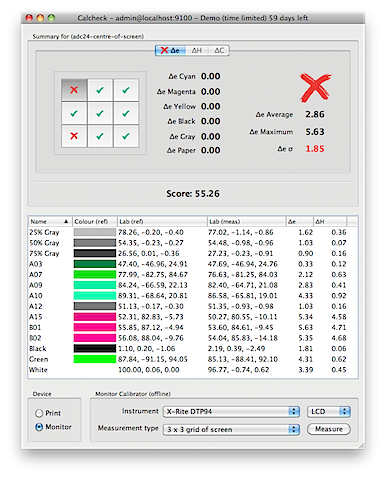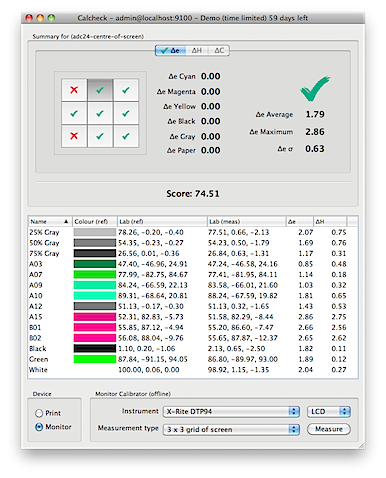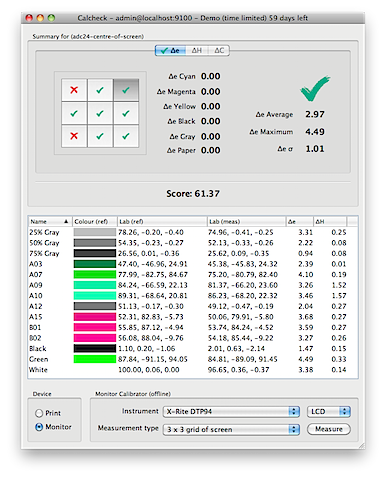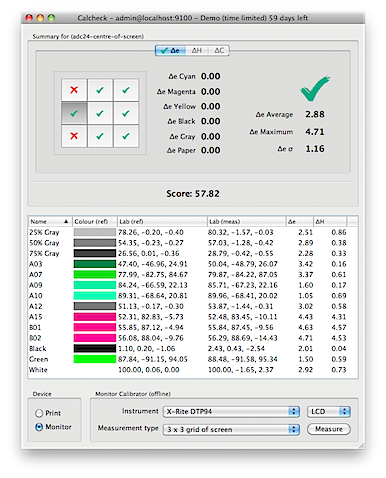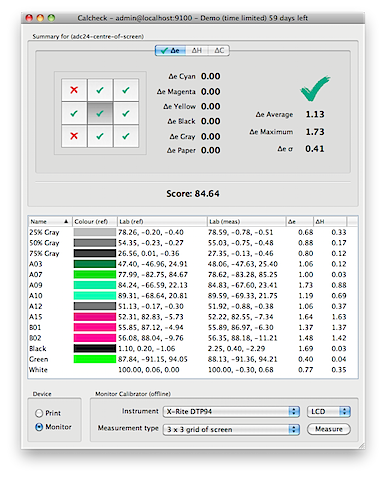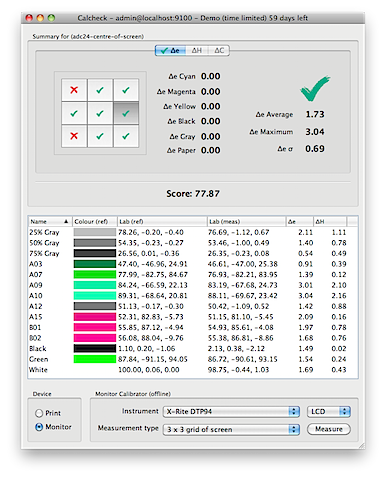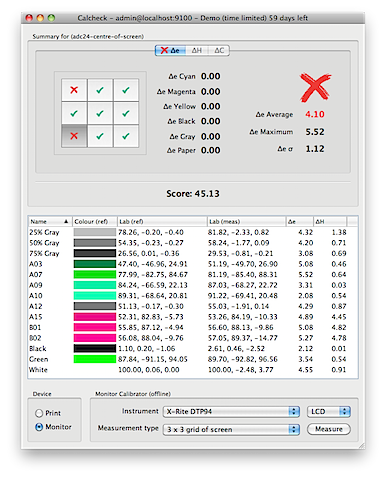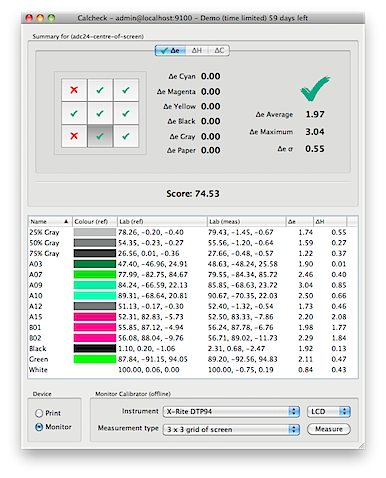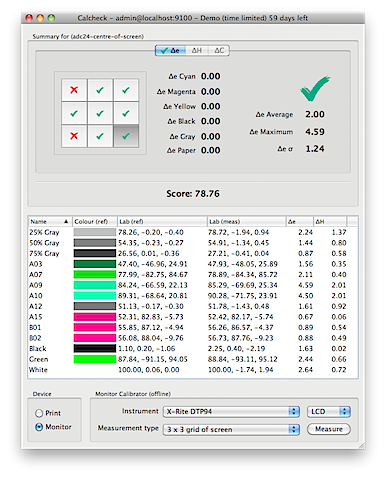Equipment used:
Macpro 2009, model MacPro4,1
Apple 24 inch LED display connected via displayport connector.
Xrite DTP94 colorimeter
Calcheck module of Veripress.
Procedure:
A set of colour patches were placed in a small rectangle in the centre of the screen and measured using the DTP94. These values were then used as the reference. Measurements were then taken on a 3 x 3 grid and the measurements compared to the reference using a simple distance formula in Lab ie. delteE CIE1976. The monitor brightness was measured at 150cd/m2 and 6481.30K. This is the way the monitor was already set as I am most comfortable working at this brightness level.
The results are summarised in the table below, and screen shots are included as a way of proof.
This is the average deltaE on the 3 x 3 grid
2.86 1.79 2.97
2.88 1.13 1.73
4.10 1.97 2.00
This is the maximum deltaE on the 3 x 3 grid.
5.63 2.86 4.49
4.71 1.73 3.04
5.52 3.04 4.59
This is the standard deviation on the 3 x 3 grid.
1.85 0.63 1.01
1.16 0.41 0.69
1.12 0.55 1.24
Observations:
From the results we can see that this monitor works best along the centre column and worst on the left and right hand columns. This is probably in line with the design criteria of the device, as most people focus their attention on the centre column of the screen when using the computer, as so most attention has been paid to making this as uniform as possible. I set the deltaE tolerance very high, 6.0, and even so the monitor does not pass the uniformity test. As I previously mentioned, I had the brightness at 150 cd/m2 but I doubt that increasing the brightness will improve the uniformity enough to make the device be useable for critical colour work.
